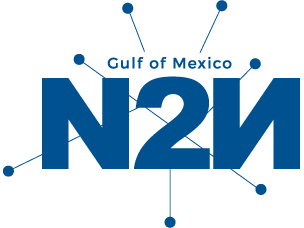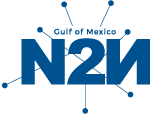The Gulf of Mexico (GoM) is a large and productive marine ecosystem bordered by the United States, Mexico, and Cuba, with significant social, economic, and environmental value. It defines a geographical domain where multiple interests converge, including fishing, oil and gas, tourism, transportation, trade, communications, real estate, public health, education, homeland security, defense, etc., which depend on its sustainability.
The value of the GoM and its unique ecosystems show a growing coastal population posing greater challenges to secure its sustainability. The social, economic, and environmental systems of the GoM face ongoing natural and anthropogenic threats such as invasive species, extreme storms, flooding, and land loss. The coastal region of the GoM is exposed to climate change and sea-level rise due to its relatively flat topography, land subsidence, and extensive coastal development. Coastal and marine stakeholders in the region face a complex reality in which to make decisions regarding protection, restoration, and conservation of the GoM’s natural resources is not a simple task requiring a systematic risk-based approach.


